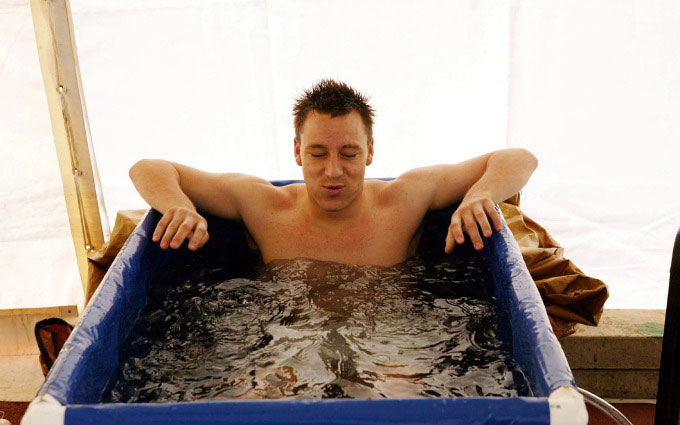Soaking in a cold stone bath is an effective way to reduce swelling, alleviate pain, and quickly cool down the body for athletes after intense physical activity.
For a long time, professional athletes have utilized ice baths, and most gyms are equipped with tubs for ice water immersion. Recently, this method has also spread to recreational sports.
Ice bathing is a form of therapy where athletes immerse their bodies in cold water after a strenuous training session. Numerous studies have explored the benefits of ice baths following sports activity and confirmed various advantages this method provides, such as reducing soreness, lowering the risk of injury by accelerating recovery, and allowing athletes to better prepare for their next high-quality training session. Many athletes and sports coaches also attest to this.
Specifically, after a high-intensity or prolonged workout, the body experiences elevated temperature, increased cardiovascular activity, and muscle tension. Muscle strain-induced inflammation triggers an immune response, causing blood vessels to dilate and sending a stream of immune cells to the stressed areas. This process is beneficial as it helps repair damaged tissues, but it can also lead to swelling and pain.
For injuries in a specific area of the body, applying ice will constrict the blood vessels in that region, helping to reduce swelling and alleviate pain. Cold also slows down the rate at which nerves transmit messages, providing another method for pain relief.
Soaking in ice water creates a more significant and prolonged change in deep tissues and is a more effective way to cool down large muscle groups simultaneously. Similar to using an ice pack, cold immersion reduces swelling and muscle damage by constricting blood vessels and lowering metabolic activity. This method also reduces stress on the cardiovascular system and lowers body temperature, helping to decrease fatigue.

Former England player John Terry soaking in an ice bath after injury. (Image: Telegraph)
Additionally, another benefit is that after finishing an ice bath, the body gradually warms up, with fresh blood returning to the body, supplying nutrients and oxygen to the cells while also helping to eliminate waste products from tissue breakdown.
Robert Gillanders, a physical therapist and spokesperson for the American Physical Therapy Association, explains: “Once the skin is no longer in contact with the cold source, the underlying tissues warm up, allowing blood flow to return faster, which helps move byproducts of cellular breakdown to the lymphatic system for effective regeneration”.
Cold Therapy Techniques
For localized injuries, apply an ice pack to the injured area immediately after the injury. Place a thin cloth between the skin and the ice pack to avoid frostbite. Keep the ice pack on for 10-15 minutes. This can be done several times a day if pain and swelling persist.
With the ice bathing method, most studies recommend immersing the body up to hip level in water at temperatures of 10-15 degrees Celsius for 10-15 minutes. This should be done with someone present to ensure safety in case you have difficulty getting out of the tub due to numbness or fatigue. After soaking in ice water for about 30-60 minutes, it is advisable to warm up the body with a warm shower or hot drink, as cold can cause muscles to tighten and stiffen.
Note: Do not apply ice to a body part or take an ice bath before running, racing, or any other exercise. The body needs to be warmed up before these activities; ice can reduce strength and make the body respond less flexibly.
Ice bathing should only be done after high-intensity training sessions or during short breaks in a match to support rapid recovery. Research shows that ice bathing does not have long-term effects. That is why it should be avoided during training periods.
Studies also indicate that icing after strength training can slow the development of new muscles. Therefore, if your training goal is to build strength, this may not be a good option.
After intense workouts or races, it is crucial to rest, rehydrate, and replenish the body with healthy foods to aid in the fastest recovery possible.


















































